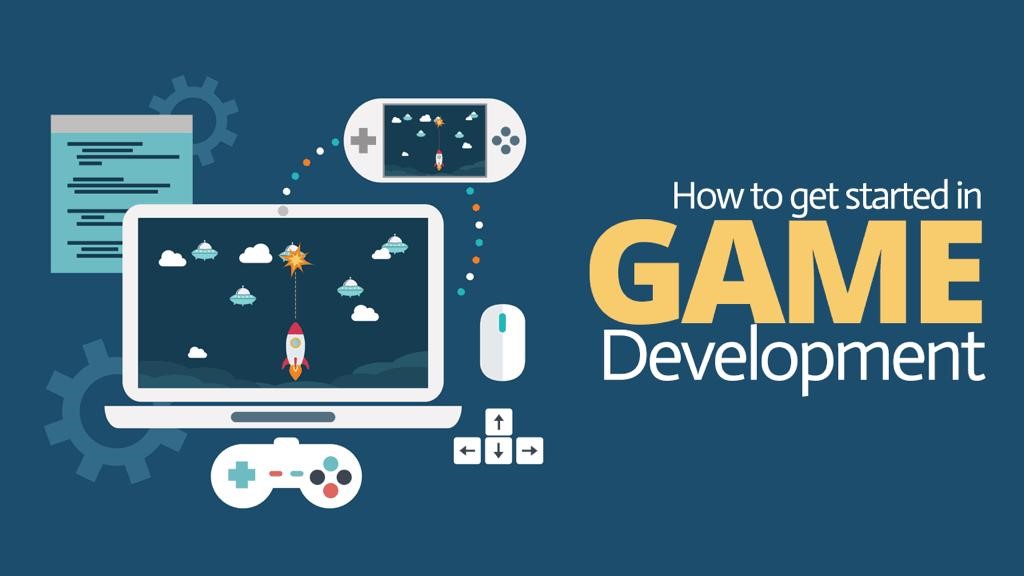If you want to make a video game, you need to know the game development stages. This article will help you learn how to make a successful video play.
So stay tuned for the rest of the article.
Step # 1- Discovering Your Purpose:
Making money is not always the purpose of developing a video game. If you are just starting out, you may need to change your mindset and build a game to gain experience, skills, and explore the job market.
Making a game takes at least three months, and you will probably face a lot of difficulties during this period. Having the right purpose helps you organize your strategies around the goal. For example, if your goal is to gain experience, you may spend more time developing the game and modulating the program by yourself. However, if your goal is making money, using some ready-made templates or colleagues’ help will be a good strategy.

Step # 2- Specify budget and time:
Once you understand your goal, you need to estimate how much money you have for spending on the game. Cost estimation helps you make the right decisions and plans.
Also, consider the time. Even if you do not have a time limit, set a deadline for your project. This will help you to work more motivated and not waste your time. If you have limited time or budget, you may need to reduce the game’s size slightly and focus on quality.
The game development is one of the areas where the lack of quality and being careless is quite palpable; you may disappoint the players’ community.

Step # 3- Create a staff team
According to the content, a game needs to design mechanisms, challenges, characters, environment images, sounds and music, story, implementation, testing, and marketing.
An independent game developer who intends to make the entire game on his/her own must take on all these tasks. That is why most independent games are known as a ‘minimal’ game.
If you plan to make the team, you need at least one programmer, one graphic designer to do visual works, and one game designer. Larger groups usually use several graphic and game designers and programmers, a music and sound specialist, a tester, and so on.
The duties of the game development team members are:
- Author: The story and concept of the game, narration.
- Project Manager: Coordination of different parts of work and proper planning for timely delivery of the game.
- Graphics: characters and environment designs, animations, modeling, illustration, etc.
- Development: Mechanism programming, menu programming, and user interface (UI).
- Game Designer: Design stages and challenges of each scene, balance the difficulty of the game.
- User experience designer: UX related items
- Sound Designer: Game music, sounds in the game.
- Tester: Fix bugs and possible errors before product release.
- Marketer: Publishing, advertising, and gaining support.

Step # 4– Documenting the project
One of the most critical steps that is often overlooked is pre-documentation. The game may be exciting in the idea stage and before starting, but it may get out of control due to not documenting everything.
At this stage, everything that is to be done, in addition to the timing and role of each team member, must be documented.
Step # 5– Choose the game engine
Although this step is very much related to game programming, identifying the engine helps determine team members’ duties and roadmap.
In general, an engine has everything a game framework needs, but with a friendlier approach, such as using a graphical user interface (GUI) and helping to develop different parts of the game.
Some of the standard game engines are:
- Construct
- Game maker
- Unity
- Unreal
‘Construct’ and ‘Game Maker’ are basically created for people who want to make games with the least possible coding, while the other two engines provide more potentialities for the developers.

Step # 6– Testing and marketing:
Usually, along with the game development, game makers test different parts of the game simultaneously to find possible mistakes. But as the last stage, it is necessary to finalize the test within one to three months (depending on the game’s size).
In this test, the game must be run on all target platforms to fix its execution errors. Also, all team members must play the game to identify possible errors.
At the same time, the publisher performs its duties as a representative of advertising and marketing. The publisher specifies in which market the game will be released. It takes time to review the licenses and the process for verifying and registering a game in each market. The publisher must carefully review all permits so that the game does not run into legal or revenue problems.

